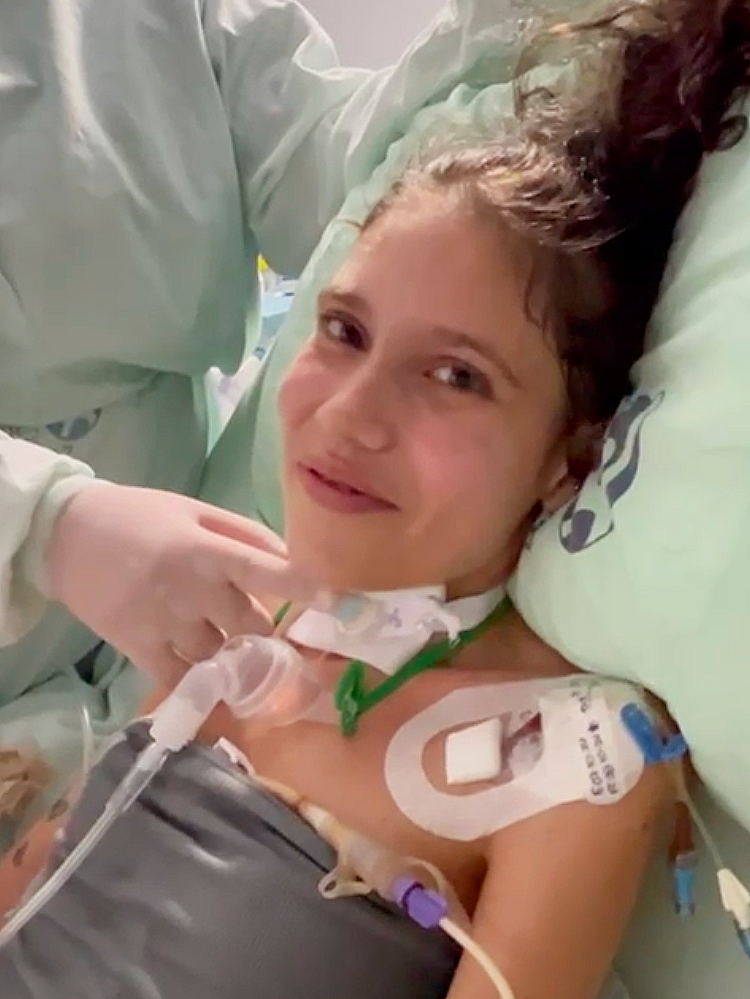Finding Strength in Small Steps: A Patient's Guide to Recovery from Paralysis
Porphyria Voices shares experiences, insights, and advice from the porphyria community. Discover valuable knowledge, foster connections, and join us in raising awareness to empower and unite our porphyria family.
Written by Maria Paula Galvis
Curated by Katrina Parra
My first days in the ICU were truly painful and filled with so much uncertainty. The pain often didn't even let me think or be fully conscious of my situation, but I did worry a lot about never being able to walk again. Every day in the hospital, I wondered when it would end, when I could walk and do my things with the greatest ease. I didn't know all that lay ahead; I believed that recovering from paralysis wouldn't be so complex. Perhaps that was my biggest mental barrier—for some reason, I thought it would be a couple of months, like when the effect of something just wears off.
What kept me hopeful were the patients my family connected with, including Katrina from the United Porphyrias Association, a foundation in Medellín, and the girls from "Alas Púrpura." They motivated me to think everything would be okay, that even though it would take time, I could achieve it. When I heard the doctors say it would take a year, I was incredibly frustrated, but I kept going.
“Every day in the hospital, I wondered when it would end, when I could walk and do my things with the greatest ease.”
-Maria Paula, AIP patient.
The Power of Tiny Victories
My recovery was built on many small triumphs. From moving my fingers a tiny bit to being able to walk on my own. My left hand was more affected than my right, so when I could finally move the fingers on my left hand, it was an unforgettable event. Other victories included gesturing well enough for my family to understand me, being able to touch my head alone, scratch a part of my face or body, and bending my knees. Bringing food to my mouth by myself, and liquids too. Sitting on the edge of the bed without help. Each one was a celebration.
My biggest advice is to let the exhaustion and frustration out.
When I didn't want to do therapy because I felt so bad, frustrated, and anxious, I allowed myself to feel that way—but not for too long. This helped me a lot because I let it out and didn't accumulate feelings that could later destroy me. My family supported me greatly on those days. They understood me and would let me skip the day's therapy, for example, or they would compensate with massages or other exercises that weren't as demanding.
Maria Paula doing physiotherapy.
The People Who Carried Me
I dare say that therapists are fundamental, and I'm not just talking about their professional performance, but as people. Most of the therapists I worked with were as determined as I was to move me forward. They made me laugh, distracted me from the reality I was living, they played music during our sessions because they knew I liked it and it would put me in a better mood. Even though they were very strict, they also understood me on the difficult days. It’s a profession that requires a lot of vocation, and in that, I was blessed.
Learning to Listen to My Body
Now, I get tired a lot; everything I do demands more energy. So what I do is precisely that: listen to my body. I know I'm overexerting myself when I start to get headaches, dizziness, and extreme tiredness. So, if necessary, I don't do therapy. But if I can, I do it with active pauses and a lot of rest. For example, I'll do therapy and then take a nap.
Maria Paula, now, recovering.
“It’s okay to take a day. On the contrary, you help your body and mind clear out so you can continue with what comes next.”
All processes are different, and even if some may seem similar and motivate you, go at your own pace. Let your body feel what it has to feel. Don't repress anything, don't hold onto anything. Because it's better to take a day to breathe and rest than to face future days full of frustration, extreme tiredness, and anxiety. Taking a day is not bad; on the contrary, you help your body and mind clear out so you can continue with what comes next.
Read Maria Paula’s story with AIP here.
For more information on acute intermittent porphyria and managing symptoms, visit Porphyria.org or contact us at info@porphyria.org. We are here to support you in your journey.
Maria Paula Galvis is a resilient AIP patient and advocate from Colombia. After experiencing a severe porphyria attack that led to complete paralysis, she embarked on a challenging journey of recovery, rediscovering strength through small daily victories. Her powerful insights into rehabilitation—emphasizing patience, self-compassion, and celebrating progress—inspire others in the porphyria community to navigate their own paths with courage and hope.
Have knowledge or experiences to share with Porphyria Voices?
Reach out and pitch your idea—we’d love to feature your unique perspective!











